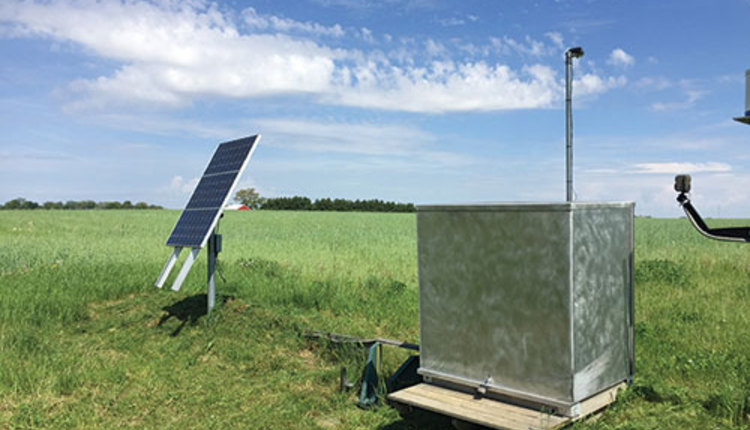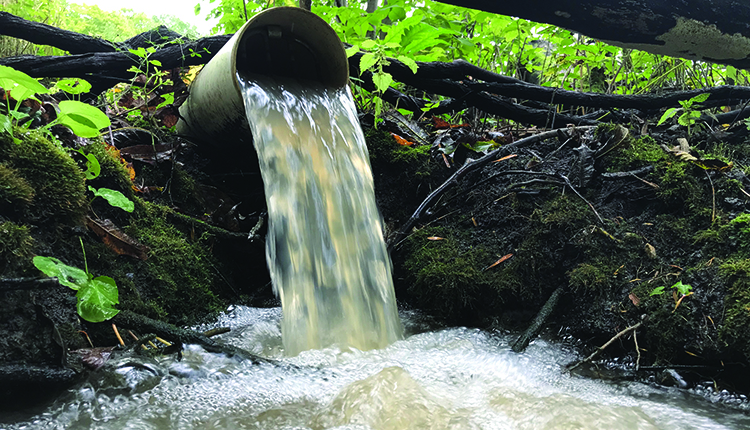Wunderlin is with the University of Wisconsin-Madison Division of Extension’s Discovery Farms program. Paletta is an outreach specialist with the University of Wisconsin’s Agriculture Water Quality Program.
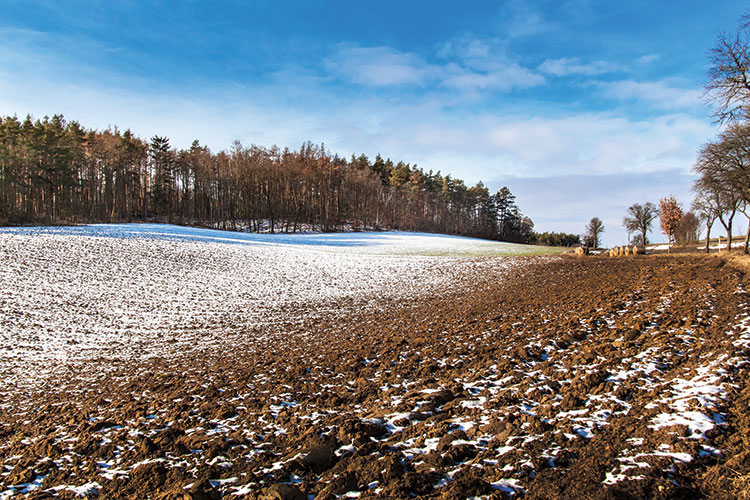
Over the years, the University of Wisconsin Division of Extension Discovery Farms Program has shared lessons learned from nutrient applications on frozen soil. The main takeaway is that applying nutrients, such as manure, to frozen ground shortly before runoff occurs leads to greater losses.
Frozen soils are more prone to runoff from rain and/or snowmelt events because it is much harder for water to infiltrate into the soil and percolate below the frost layer. Understanding how soils freeze and thaw provides insight on the development of soil conditions that are more susceptible to runoff and is important to consider when making decisions about nutrient applications.
The dynamics of how soils freeze and thaw throughout winter can strongly influence surface water runoff potential during snowmelt and early spring rains. The combination of physical and climatic variables in a local region can result in varying freeze dates, frost depths, and thaw dates.
The freeze-thaw cycle
The freeze-thaw cycle in a soil can vary based on several factors including:
- Soil type
- Soil structure
- Landscape position
- Temperature patterns
- Soil moisture content
- Geographic location
- Ground cover
- Timing/depth of snowpack
- Rain/snowmelt on frozen soil
- Frost depth
Discovery Farms collects soil temperature data at multiple depths throughout the year at each of the monitoring project areas to assess the soil conditions as it relates to runoff. For our purposes, “frozen soil conditions” are defined as a soil temperature below 32°F at any depth monitored. Depending on factors listed above, our data reveal that soil conditions can either fluctuate between frozen and nonfrozen throughout winter or freeze and stay frozen until spring.

As observed in Table 1 and 2, soil does not freeze and thaw at the same time each year, nor is the length of time when soil is frozen the same. Within and between years, the factors listed above can influence timing at any given location.
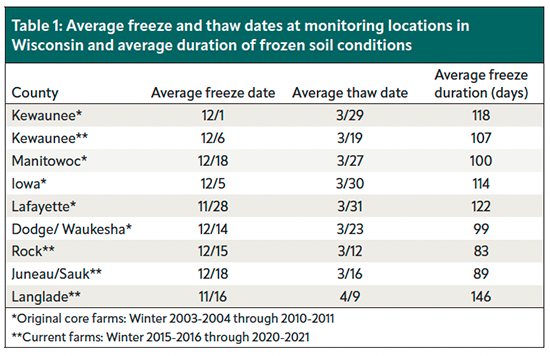
As hard as concrete
The amount and type of frost present in the soil is one of the primary factors that influence the amount of surface runoff generated by snowmelt or winter rain events in any given year. These conditions in the soil vary widely across the state and even in your local area. A challenge that develops with surface thawing while frost remains deeper in the soil profile is water can still infiltrate to fill pore space above the frost layer and then refreeze when temperatures drop again.

In some situations, the upper profile of the soil becomes saturated with water to the soil surface before freezing. Concrete frost takes longer to thaw than regular frost in the soil; therefore, once it forms, it is typically present for the rest of winter until the entire frost is pushed out of the soil and water can percolate through.
The development of concrete frost has been verified in data collected by both Discovery Farms and others where melting occurs at the surface but the frost is not fully removed from the soil. In this situation, melt or rain water percolates to the frost layer then refreezes (Figure 2). These studies have also shown that during concrete frost conditions, little to no infiltration occurs in the soil as pore spaces are full of ice.
The in-field study conducted by Melanie Stock and collaborators at the University of Wisconsin also found that frozen soils create significantly greater amounts of runoff than unfrozen soils. This study applied liquid manure at different timings throughout the winter and saw higher runoff and nutrient losses in January compared to December. They attribute this to the presence of a thick layer of concrete frost (20.1 inches deep) that developed in January (Figure 2).
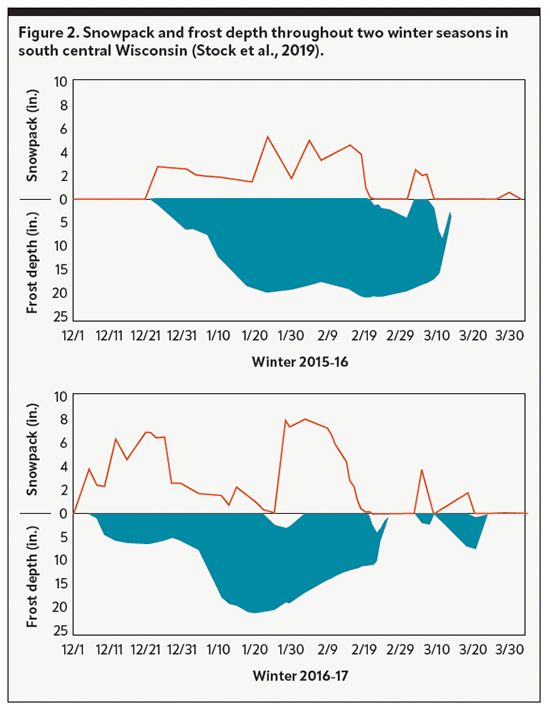
Stock also found that another important factor to consider when applying manure on snow is the effect of albedo, which is the reflection and absorption of sunlight. Manure is dark in color, which raises sunlight absorption. This speeds up snowmelt and can cause rapid runoff. In a case where snow starts to melt but concrete frost is still present, the newly melted snow cannot infiltrate the soil and becomes surface runoff.
Avoid risky areas
Nutrients applied to soils during concrete frost conditions have a very high likelihood of loss via surface runoff. Avoid nutrient applications during concrete frost conditions to prevent nutrient loss, which degrades water quality. This is not always possible, so be sure to place your nutrient applications in areas of the least amount of risk.
During concrete frost conditions, utilize internally drained land (closed depressions) or low-sloped (flat) land, areas that are far from surface water features, and target those fields that have vegetative cover throughout the winter. Utilize your local conservation resources to assist you with your decision making when spreading manure this winter.
This article appeared in the November 2022 issue of Journal of Nutrient Management on pages 6-8. Not a subscriber? Click to get the print magazine.





